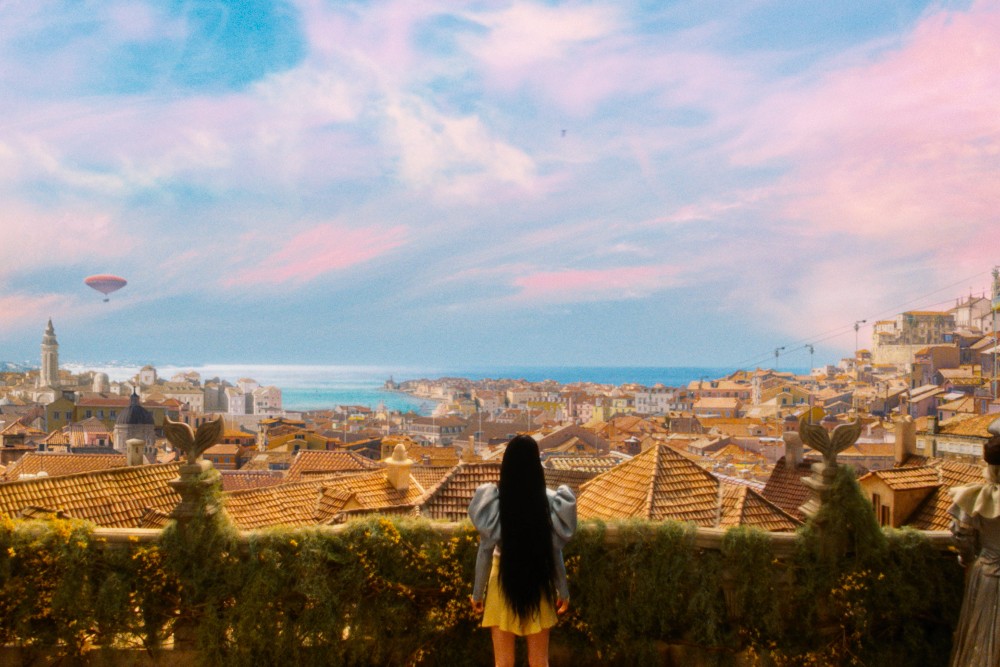
2023 was a great year for cinema, full of absolutely gorgeous films, a testament to all the splendid work by production designers, and in particular, the five nominated in the Production Design category at the Oscars, as well as those nominated by the Art Directors Guild (who will hand out their awards this coming Saturday, Feb. 10).
It’s impossible to watch Yorgos Lanthimos‘ Poor Things – which received 11 Oscar nominations a few weeks back – without marvelling at every single new location and environment visited by Emma Stone‘s Bella Baxter on her evolutionary journey discovering the world anew.
For this one, Lanthimos used two new production designers, James Price and Shona Heath, and had them working together for the very first time. Price’s previous work included art directing on Judy and Paddington 2, and acting as production designer on Sean Durkin‘s recent The Iron Claw, while Heath has a shorter resumé (designing mostly for shorts) but one in which she handled both production and costume design.
Below the Line had a chance to speak with Price and Heath back in November as Poor Things was getting ready to roll out to theaters, after a successful launch at a number of September festivals.
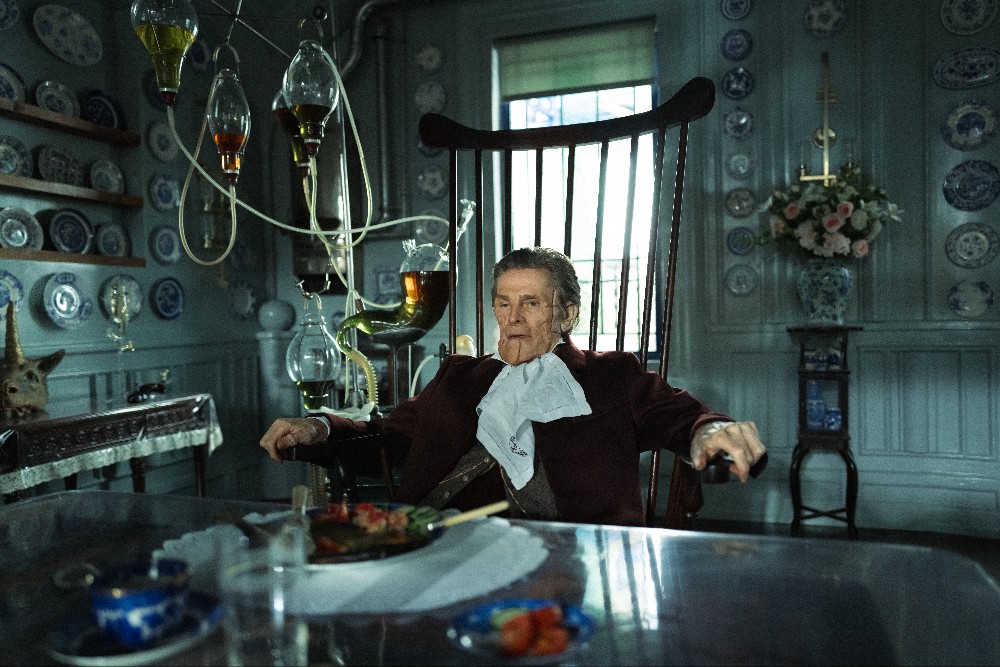
But before we get to that interview, we had a chance to talk with actor Willem Dafoe, who plays Dr. Godwin Baxter, the semi-mad scientist whose experiments bring Bella to life. Dafoe’s character plays a key role, especially in the London portion of the film, with many incredible sets, which we asked him about in a separate interview.
“It was pretty complete,” Dafoe said about the film’s sets. “Certainly, [the production designers] did talk to us. The whole thing is about making us comfortable, making us own that place, while it’s basically their design. They do ask us some things, but it’s quite far along by the time I arrived, if I remember right. The amount of detail was just incredible. I used to just wander around the set, look at objects, and read the books. Inside these books, there were actually things that related to what was going on. There were medical diagrams of the period, either borrowed, invented, reproduced; I could spend all day there.
“A good example of a set element that really made you feel different was one of the floors was very tufted,” he continued. “It was kind of pillowy, like a soft upholstered floor, so when you’d walk on it, it was a very strange sensation. Many things like that couldn’t help but shape how you walk, how you move, how you think. It was a beautiful place to perform.”
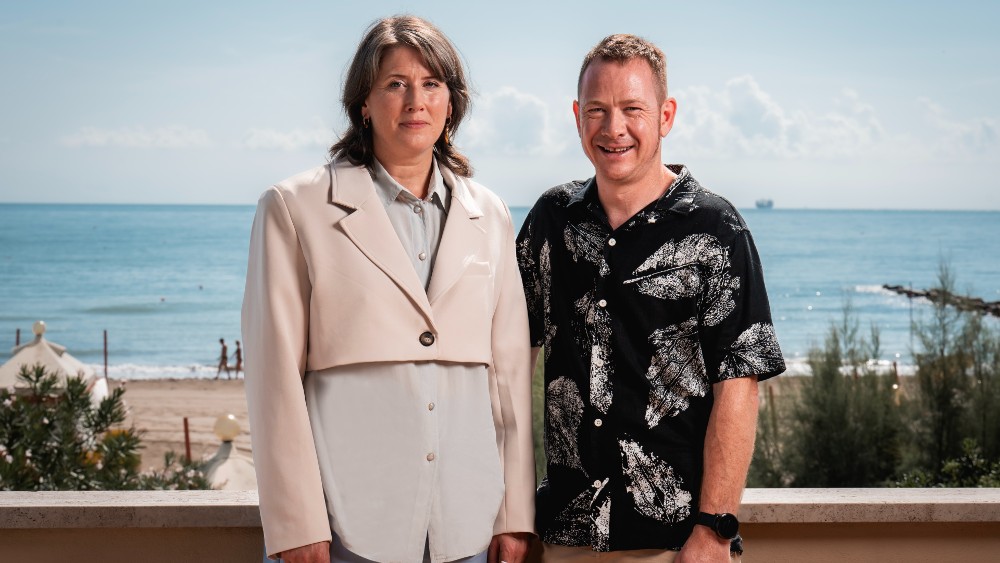
And now onto our interview with Price and Heath, getting into more detail about this fantastically-designed production, as they explain why they don’t consider Poor Things to be a period piece.
Below the Line: This is an absolutely gorgeous film, and my jaw dropped any time a new location appears on screen. This was the first time you worked with Yorgos, so how were you approached for it, or did you pitch to him? What was your introduction into the world of Poor Things?
Shona Heath: I think we were both approached to pitch simultaneously, because of the scale of the job, and also, James and I being from very different backgrounds. Kasia [Malipan], the producer, she very cleverly thought maybe these two could do it together, so we had a go. We did a week seeing if we could get on and work together, which we could and did, and then we did two batches of concepting, together, so that’s it in a nutshell.
James Price: It’s the first time we’ve worked together. It was pitched to see if it would work, because Yorgos wasn’t sure what he wanted. The brief was a 1930 studio movie, [if it was] made with today’s technologies and techniques from a bygone age, so you could use everything from miniatures and cutouts to LED screens, and that was it.
He wanted it to feel like a 30s movie, like it was made in the 30s. He just wanted to use that premise as if you were making it now. He believed that by doing that, and using techniques – try to stay away from CG and green screen as much as possible – he believed that we would come up with a new aesthetic, so it wouldn’t be a pastiche of what it had been before.
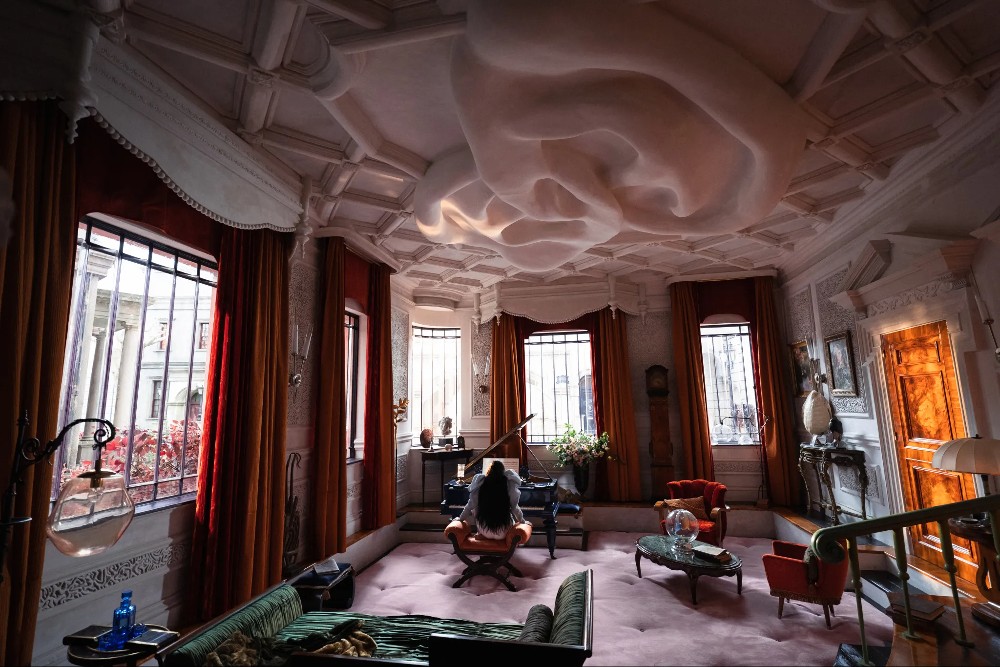
BTL: Once you sat down together to break down the script, what was the first thing you had to do? Did you just look at all the locations and pick the hardest one to design first?
Heath: It’s like you said. Break down what is in that script, what it is that needs building, and then, I suppose James would use a scattergun research. Neither of us started in one place and refined it. We really had a go at everything all at once, but mainly the finer refined approach. We did start off in London. We got the real feeling in the detail, in the era. We nailed that in London. We spent a lot longer on that, because that defined our world and how Bella was and where she grew up. That was the seedling, as it were.
Heath: Most of the film is set there, too, actually, in that house. The longest time you’re in a set is that house, so that was important.
BTL: Was this actually shot in and around London, or did you guys go to other places?
Price: Every set is built in a studio in Hungary. We were in [Origo and Korda Studio] in Hungary, Budapest. We were based in London, just for the concepting, and then we built it all in Hungary. We never went to Lisbon, we never went to Paris, predominantly because it was the pandemic, and there wouldn’t have been time probably if there hadn’t been the pandemic. We went off memory. We’d both been to Lisbon like 20 years before, and we’d obviously been to Paris a few times, so you’re going for a feeling of these cities, not the real thing.
Heath: London, we built a street on a backlot in studio that was a built street and the house is a built house. So, really, everything you saw, other than… There are a few locations that we renovated and gave the Poor Things treatments — the interiors of the medical school, and Alfie’s house, the interior, but other than that, everything was built for the film.
BTL: Part of the film seem like a period piece, but it isn’t really, because there are aspects to Lisbon and Paris, where there are flying cars, which is complete fantasy, almost like the cities are a mix of old and futuristic.
Price: That’s totally intentional. I mean, it was loosely set in the late Victorian time, but we didn’t really stick to any rules. When you get down it, most cities that you go to, they don’t really follow the rules of that time anyway. The architect designing and trying to create those buildings is trying to bring their own stamp on it and a bit of their own quirkiness. When you start looking up these cities, you have a lot of freedom anyway, so we did that. Plus, it’s not really a period piece at all. Wouldn’t you agree, Shona?
Heath: Definitely. There’s something dreamlike to it, because I suppose the eyes in which Bella sees through are really unique. That’s where we felt our freedom came, in a way, is from her, that it could be anything that she was seeing. She might have traveled on a plane, but she travels on a fish, and it didn’t matter. Those things really helped when we broke the back of this fantasy element, almost. That it came from her; it wasn’t just willy-nilly, it was her mind. That helped us with, hopefully, not defining an era.
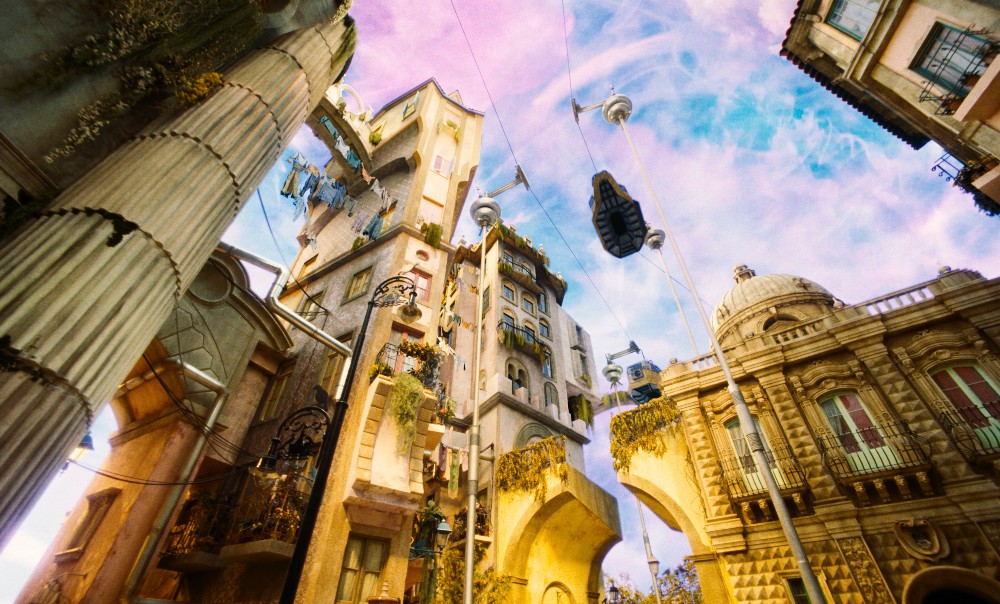
BTL: I really enjoyed the interstitials introducing each new location, so did you end up doing all of those during a different part of the production?
Heath: Yeah, the chapter headings, and that really came from almost the problem of if she was to travel in a boat or a train, it would stamp the era on it. Also, it was quite a mundane thing to do, to travel in a way for her. Those chapter headings, they were sort of designed as we went along, weren’t they, James? They came in almost when we were shooting, they were being designed and thought about and shot. They weren’t in the script, and they weren’t planned for.
Price: I think there were a lot of surrealist elements, like the bridge. We had a reference to this bridge that we all liked, but couldn’t figure out how to use it in the movie, and the fish idea. There was a painting of Bella, turning up in Lisbon on a fish. They were too surreal to literally put in the film for Yorgos’ taste, but he liked those surreal elements. One day, he was like, “Well, we should just do chapter headings.” Because he liked the idea so much, he found a way of shoehorning [in] those elements, and they’re a real integral part of the movie now.
BTL: Do one or both of you have architectural backgrounds?
Heath: No, I do not, no.
Price: No, I did Applied Arts so much more of a design-making background.
BTL: With that in mind, who do you work with to literally build an entire London street or a building? You design it, but then do you have to work with people like your art director to make it a physical structure?
Price: I’ve learned how to do architecture over the years. I’ve art-directed for a long time, so you learn how to do that. I think if you’re a designer, you should be able to design anything. You could say to me, “I want a car design.” I’ll give it a go designing a car, and Shona would likewise give it a go designing a space station. I mean, you should be able to train your hands to doing anything, I think, if you’re a creative in that way.
Heath: We have to. We had designed a street, and again, trying to instill that street with elements that were sort of out of this world and in this world as well. We really shopped and inserted things that shouldn’t be there all together, just to get this strange feeling across, but so that you knew you were in London.
Price: Also, that’s one of the beauties of production design. You are an architect one minute, you’re a storyteller, you’re an interior designer, you’re all these things. All of these different disciplines feed into production design, and that’s what makes it exciting and unique. It’s one discipline that you can fulfill those dreams. You don’t have to pick being an architect or a fashion designer. When you design for film, you can be all of those things.
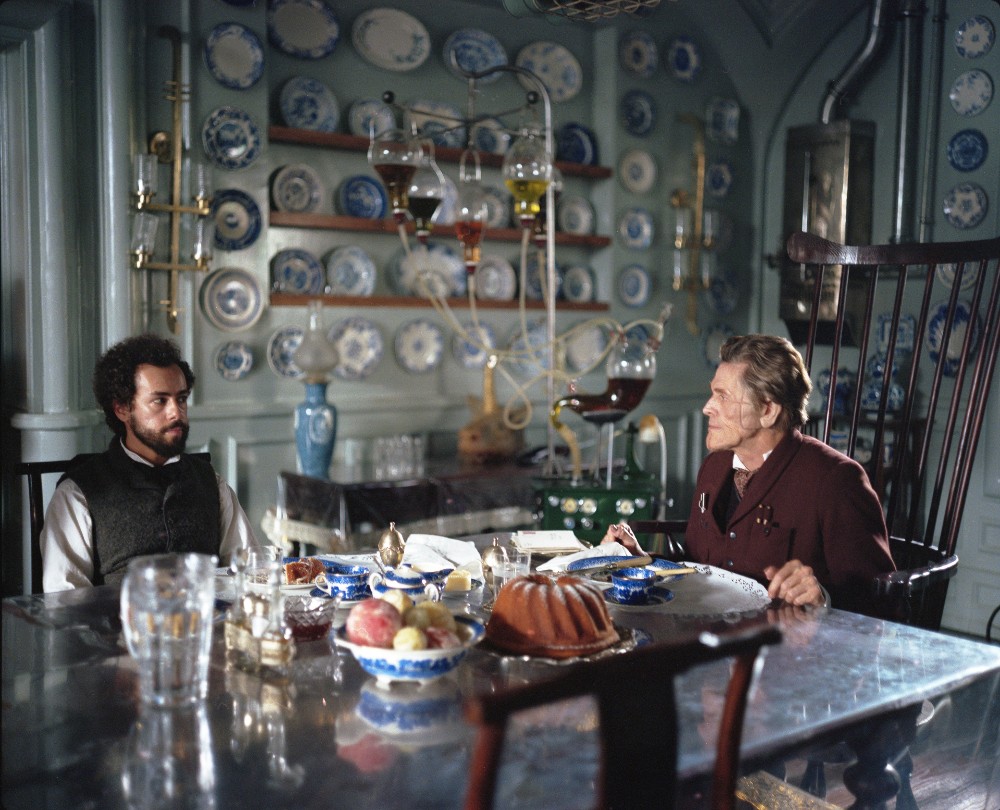
BTL: One of the key roles in the art department that sometimes gets overlooked is set decoration. For Poor Things, it’s absolutely astounding. Seeing the plates all over the wall of Godwin’s dining room really amused me. Every scene just has brilliant set decoration, so do you have a set decorator you’ve worked with before, or do you find someone you can work with in Hungary?
Price: Our set decorator was from Hungary, and because of the way we work together, Shona thinks a lot about detail. A lot of the set decoration elements per se were thought about as the buildings were being built. One of the reasons it’s so cohesive as a world is because we were thinking about all of that stuff together, at the same time as working out what the lay the street. We were thinking about the fabrics on the wall in those buildings, too.
Heath: The plates in the dining room, you’re talking about, the indentations were designed to put the plates in. The plates were where we started with the dining room, because we thought that Baxter would have a slightly obsessive nature of maybe collecting the same thing, these blue things. You’re right to see that they’re one and the same thing, the architecture and the decoration kind of sunk into each other, because we were doing them at the same time. The concept art was fully decorated, wasn’t it, James?
Price: Even the early concept arts were fully [decorated], absolutely. I mean, if you look at Baxter’s living room, for example, the pelmets, which you would think of classically as a set decorating item, are actually architectural details, because they are plaster, and the way that the curtains fit into them, they’re one and the same; they’re not two separate things, and that is the architectural detail of the building. Because of the fish-eye lens, we knew that we couldn’t have hard edges, so there’s a cohesiveness to the whole thing, where the set decoration isn’t just the next stage after the space has been [built]. It’s all happening at the same time.
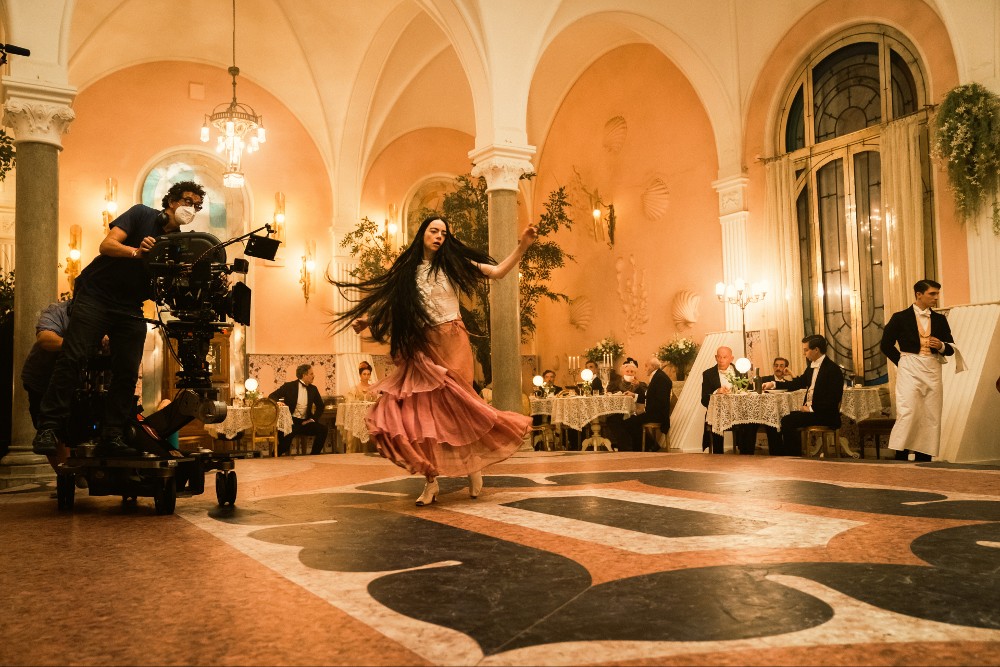
BTL: Do you use computers as part of your design process to build things, up or is it all hand-drawn concept art? Or something in between?
Heath: Everything really. We started off with sketching, collaging by hand, and then, it would go into the computer, and there were detailed video games of Baxter’s house that looked like Baxter’s house as you saw it. You could walk through it – it was extraordinary. We had amazing concept artists who visualized James’ and my ideas. It was great, actually. I think people bought into the idea it was going to work more, because they could see it in this hyper-realistic state. They were things of beauty, these walkthrough things, weren’t they, James? Were they done on Rhino or Blender? What was the [software]?
Price: Blender, and then we started taking things into Unreal Engine, because that was just coming on, Unreal 4. I did toy with the idea of buying a VR headset, but we just didn’t get it together. I think we were a little bit too far behind. One thing that you don’t get with the 3D modeling is scale, because you can zoom in and out of a computer, and you don’t know what is the scale? I would have liked to have done a 3D walkthrough, but yes, everything was Blender. So it went from hand drawing into Blender, and then the architectural side of it.
The art directors would then take it and probably put it into Rhino and do technical drawings based upon Blender. Most of the Blender models were done by Jonas [Bethge] and Antonio [Niculae], these two guys, and then we had some other people in Hungary, but they were on from our first lot of concepting right through to the end. It’s the best way to bring everybody along with something.
It’s all about presentation, but to bring somebody on board, not just to get your ideas across to Yorgos and to everybody else, the best way of doing that is in creating those environments in 3D, as near to what you’re going to get as possible. You’ve got to try and convince people to give you the money to make this movie that’s pretty fantastical, you know?
BTL: You also mentioned LED panels before, and while watching the movie, I thought maybe there was some matte painting on set, so was that something you used to create some of those large-scale landscapes or was that done using LED screens?
Price: We did old-school painted backdrops. Lisbon had three scenic painters come from London: Nigel Hughes, Tommy Jolliffe, and Steve Mitchell. The Lisbon backdrop, it was 170 feet long, I think, by 60 feet high … ginormous… so you’re on a cherry picker spraying … and there’s not many people, definitely not in Europe, that can do that, and most of them were there. That was kind of cool having those guys, using the designers I look up to, and I think they’re brilliant. So to have three of them on one of our sets was really quite exhilarating for me personally — loved it.
Heath: The LED screens were used around the miniatures, like the miniature ship, the miniature of Alexandria, and then also, gigantic LED screens scooped around the deck of the boat, which is what the water, the sea and the sky, was on. James and I had to design the skies as well. They were all designed, and they all have something surreal and strange about them. Yorgos wanted them to be otherworldly, so we worked with an artist who works with ink tanks, making art in water using some different viscosities of liquid and grains. These weird galactic shapes form in the skies as well, so even the skies have a handcrafted quality of their own.
Price: The skies took a lot of work actually, we evolved them a lot. One of the things that we used to say to people, as our team was scaling up, was like, “You can’t even rely on the skies in this world.” It was to try and get through to everybody what the detail [was] that we were working at.
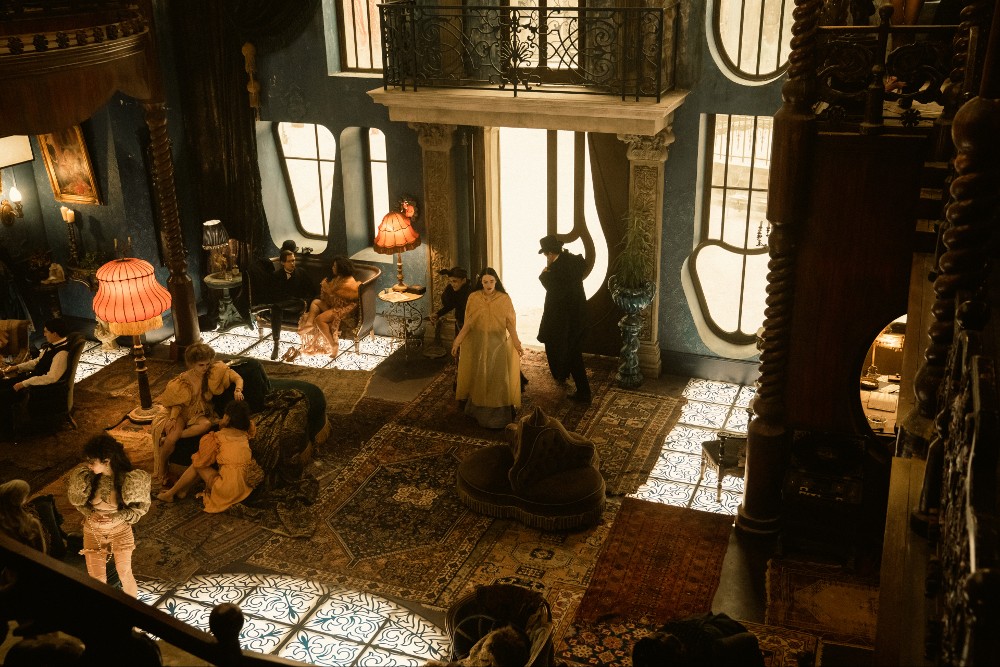
BTL: Was the Paris brothel all one location, or did you have separate rooms built on different parts of the soundstage? Same question for the ship, since you do have the exterior which has the LED screen, as you mentioned, but then there are smaller cabins and other locations on board. Were those both large sets where people could walk from space to space?
Heath: The brothel, you walked off the street into the brothel, and then you could go up the stairs to Bella’s room or to Madame Sweeney’s office. It was all there, it was all together. And the same with the underbelly of the boat. The cabins were down corridors. There were two layers of the boat and the deck was attached, so yeah, it was all composite.
Price: Everything’s composite, so you take it to another level of immersive. Lisbon’s the fine example of that, where it was the most immersive. You walked onto that stage, and the bar, the oyster restaurant, the hotel room and the lobby, they were all linked, and you could wander around that street and everything. The idea to do that is when you’re trying to create something, which is a bit unique.
It gives the filmmaker, Yorgos, and Robbie Ryan, the DP, possibilities to just wander around the streets and give them the flexibility of where they put the camera. Also, the cast, it makes it totally believable and real for the cast, for the actors. When they step onto one of those sets, they are in London, they are in Lisbon. It’s all there, and we believe that helps with the performance. It comes across and gives us the flexibility. It just helps it be more organic and real.
Poor Things is still playing in many theaters nationwide, and it likely will be on VOD very soon. Check out the Art Directors Guild (ADG) Awards on Saturday, Feb. 10, to see how it fares against other Oscar nominees.





